Land Hey(Sisters duo|“The Power of Sign Language” delivered by sisters)
2025.10.09
PLUSVoice,Inc. President and Representative Director
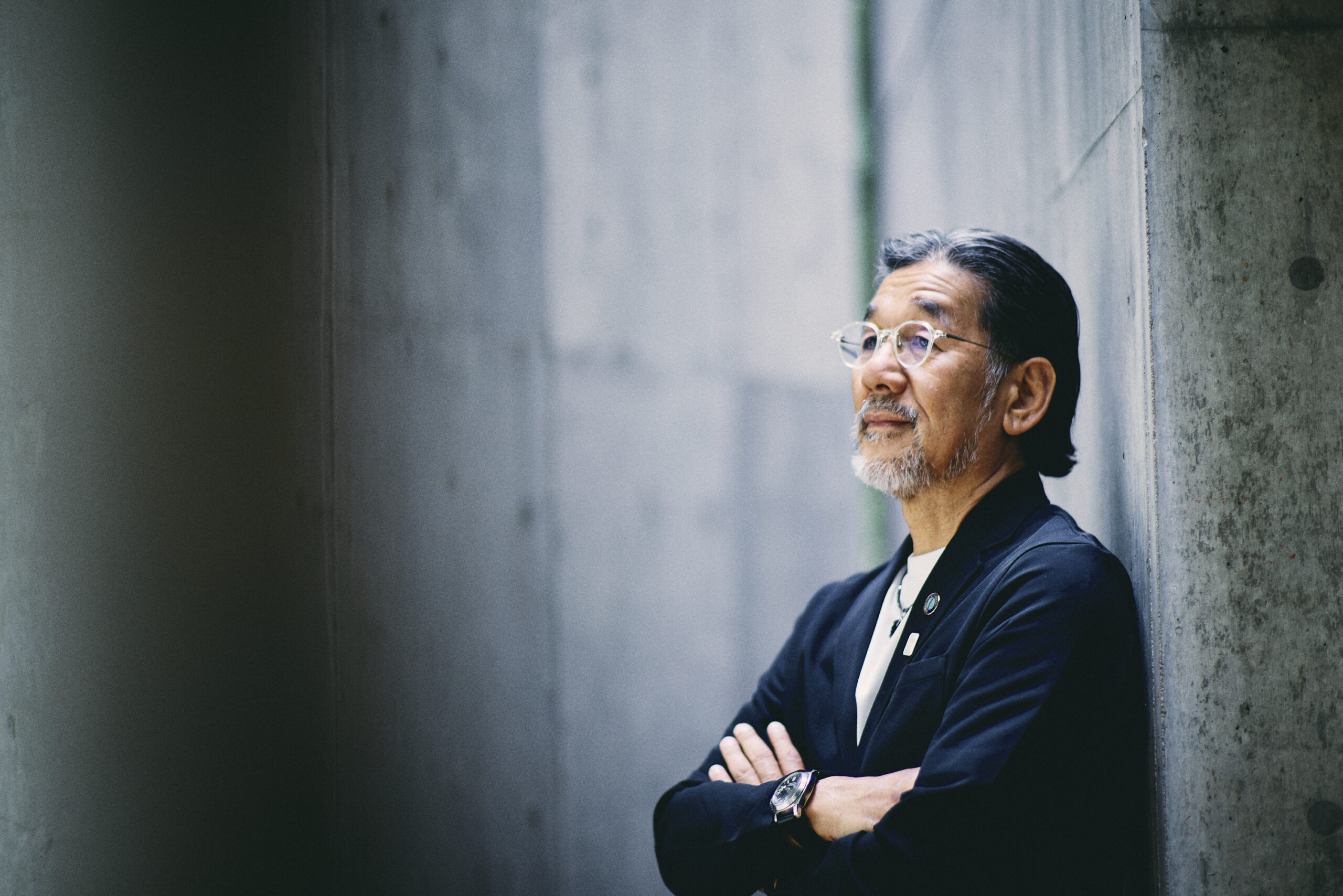
2025.07.08
PLUSVoice, Inc. aims to realize a society without the digital divide,
for deaf people to communicate anytime, anywhere, in their own way,
Hiroyuki Miura is the representative director of this group.
Since its establishment in 1998, it has been providing communication services that utilize ICT to the world and has been striving to solve the problems of deaf people.
PLUSVoice, Inc. is looking at a “society where everyone can live comfortably”.
“Knowing the current situation surrounding deaf people” may be one of the actions that will change tomorrow.
目次
――What kind of services does PLUSVoice, Inc. mainly provide?
Miura PLUSVoice, Inc. provides communication service which utilizes ICT (Information and Communication Technology) so that deaf people do not have trouble communicating anytime, anywhere. One of them is the “proxy telephone service”. For example, if you want to make an appointment at a beauty salon, but only the phone number is listed, if you use this service, a sign language interpreter will stand between you via videophone, convert the remarks of both parties into sign language ⇄ audio, and deliver it in a relay format. In addition, the “Remote Sign Language Interpretation Service” for corporations and governments can be used when there are people who cannot hear at the counter of a store. By simply placing a pop-up with a code that leads to the service at the counter, our sign language interpreter operator or local government interpreter will interpret the conversation between the customer and the staff via video call. Since it is a service that can be reassured by both parties, it is currently installed at many points of contact such as government agencies, local governments, and major companies.
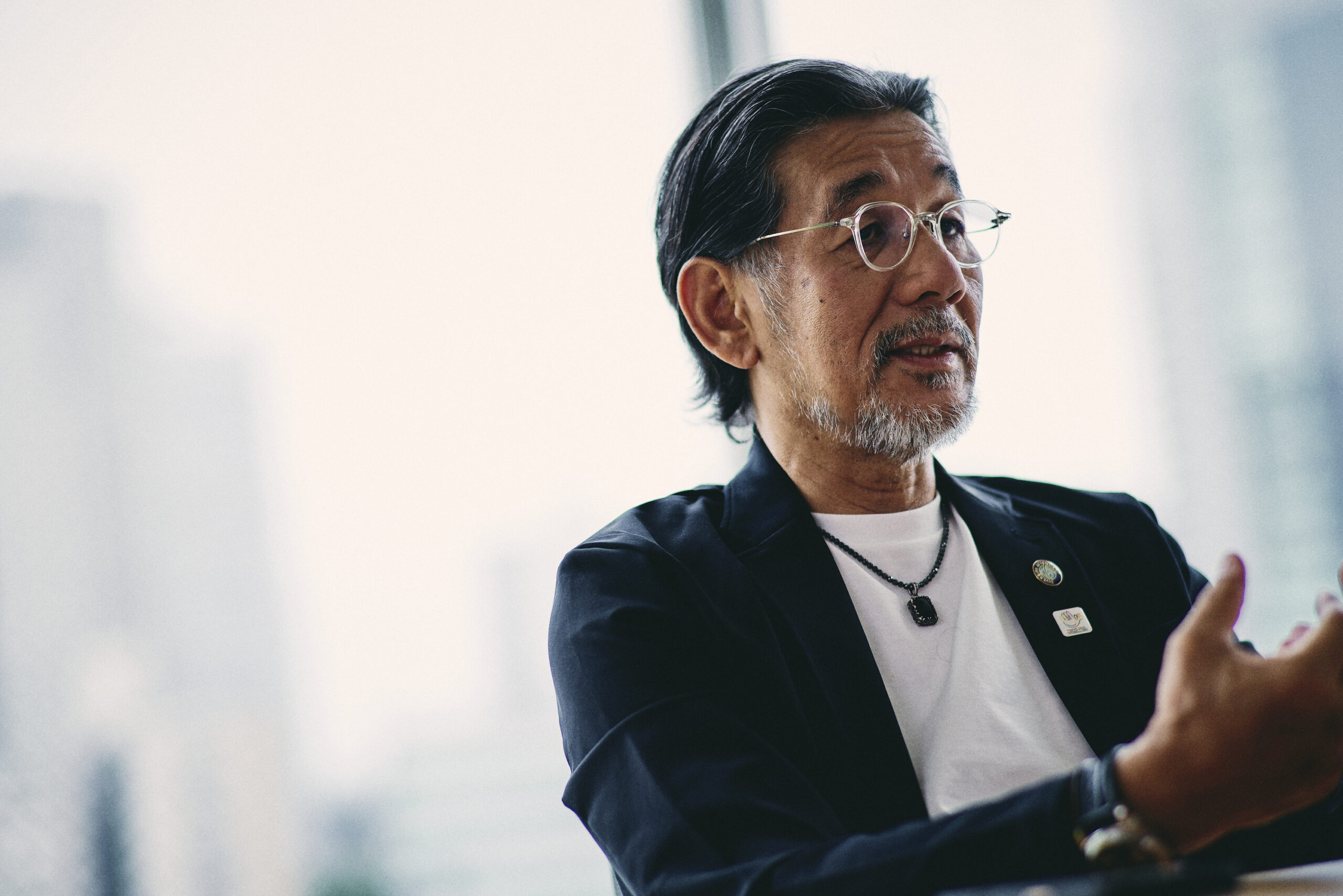
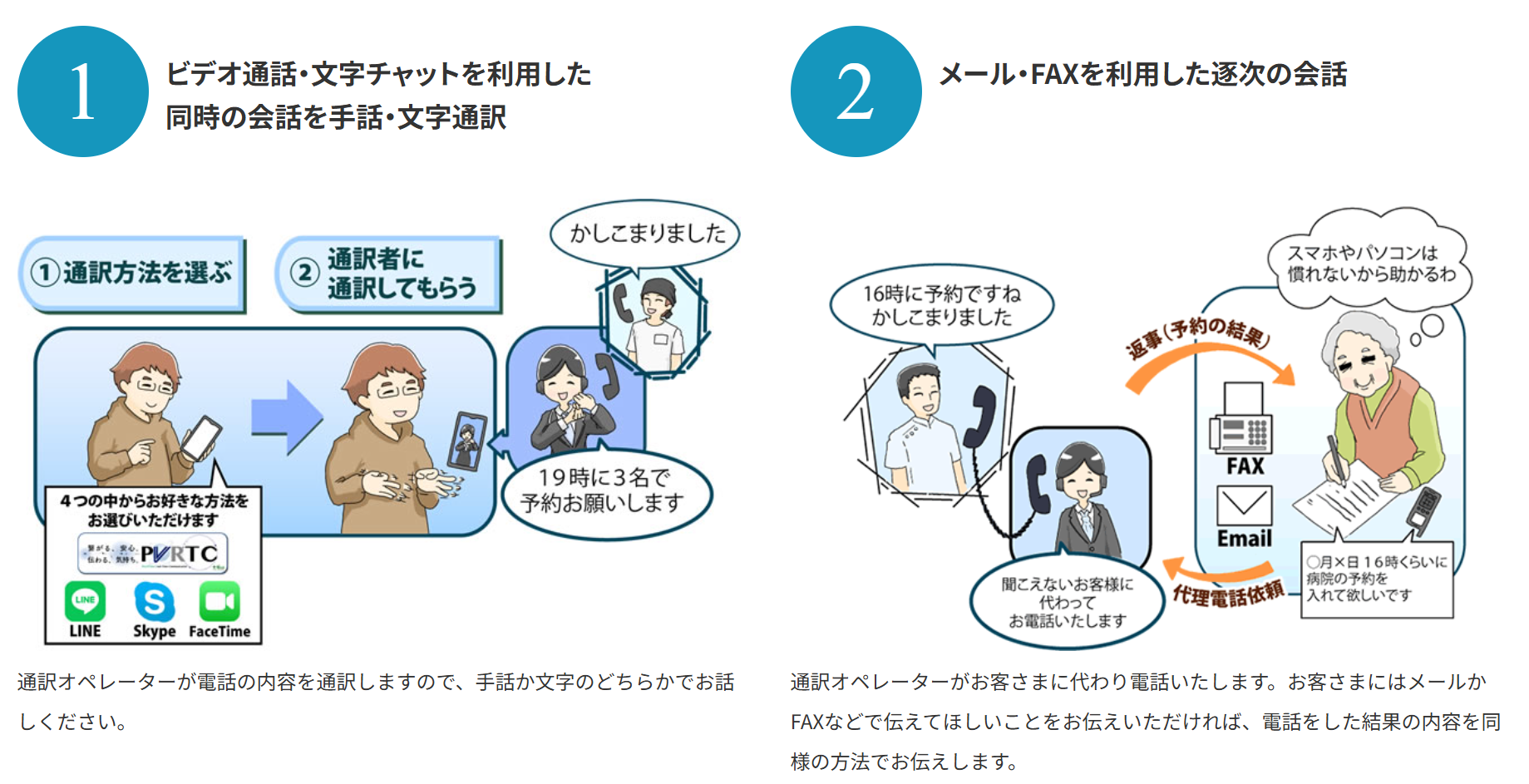
◼Remote Sign Language Interpretation Service
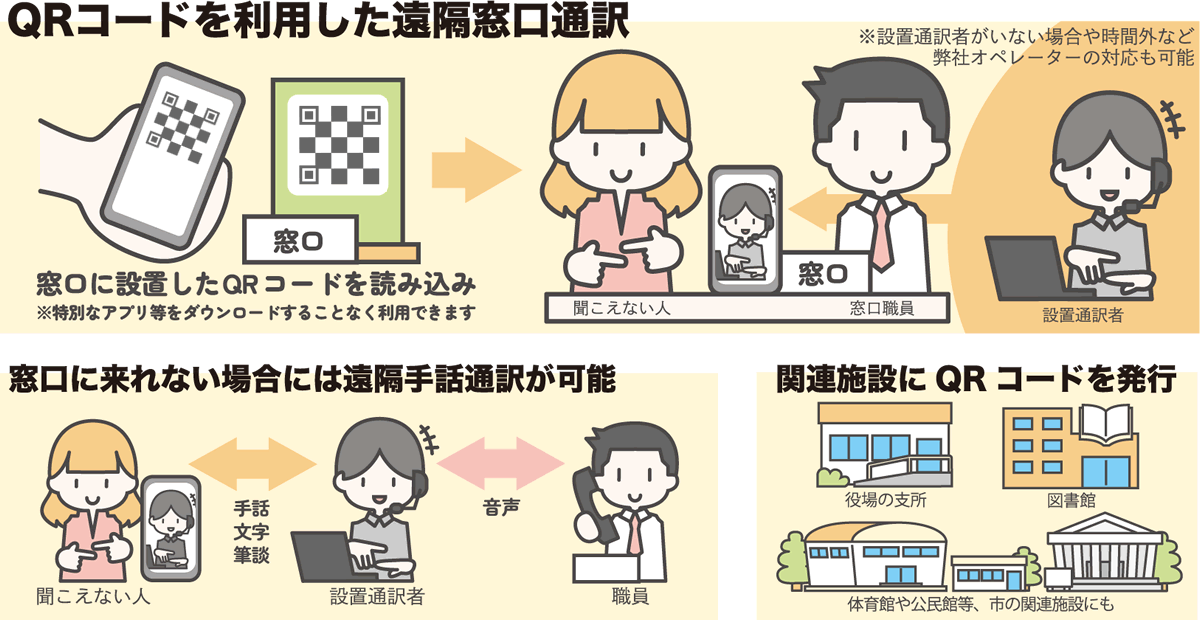
―Why did you come to support deaf people?
Miura It all started with an incident at my previous MC job. After graduating from university, I joined an insurance company and worked as a salesman in my hometown of Sendai. But I wanted to do a job where people would say “thank you,” so I started working as a freelance MC in parallel with an insurance company. I used to work in sales for an insurance company, so I always liked talking. In the end, I continued to work for insurance companies and as an MC for about 10 years. One time, I got a job as a wedding officiant, and the bride was deaf. The two of them met at a sign language circle, and many of the attendees were deaf, and the entire venue was already in sign language. It was my first experience. At that time, there was a motto to make the audience laugh at least three times at the wedding reception, but that didn’t work at all (bitter laughs). I felt alienated, frustrated that I couldn’t do anything, and all kinds of emotions mixed in, and it was the worst MC of my life. But strangely enough, even though I had never interacted with deaf people before, I became interested in deaf culture when I saw people happily speaking in sign language in front of me, and I thought, “Sign language sounds interesting.” From there, I began to study sign language on my own.
―Self-taught! Your experience as an MC at that time must have been a very vivid experience for you.
Miura In the meantime, I quit my job at an insurance company and started working in the event business. It was around the time that mobile phones that could use e-mails appeared, and we started planning a campaign to distribute PHS free of charge. At that time, I suddenly thought, “For deaf people who cannot obtain sound information, the e-mail function may be useful.” When I actually gave the PHS to the deaf, they were very happy with it. After all, it’s revolutionary to be able to get in touch with someone right away from your family or on the go.
From there, we began to seriously sell handsets that were equipped as standard equipment with features that were easy for them to use, such as a vibrator function, direct e-mail, and a text transmission function that could be used anywhere in Japan or overseas, in order to create a mobile phone terminal that was easy to use for deaf and hard of hearing people in earnest. This was a response that exceeded expectations, and in no time at all, we had about 6,000 users nationwide. However, there were also heartless voices such as “preying on welfare”, and sales for mobile phone terminals stopped. But I want to do something for users all over the country… Therefore, I thought that it would be possible to solve the problems of deaf people by involving companies and governments, rather than selling things to deaf people. Taking this opportunity, I closed my MC business and established PLUSVoice,Inc. in 1998 when I was 35 years old.
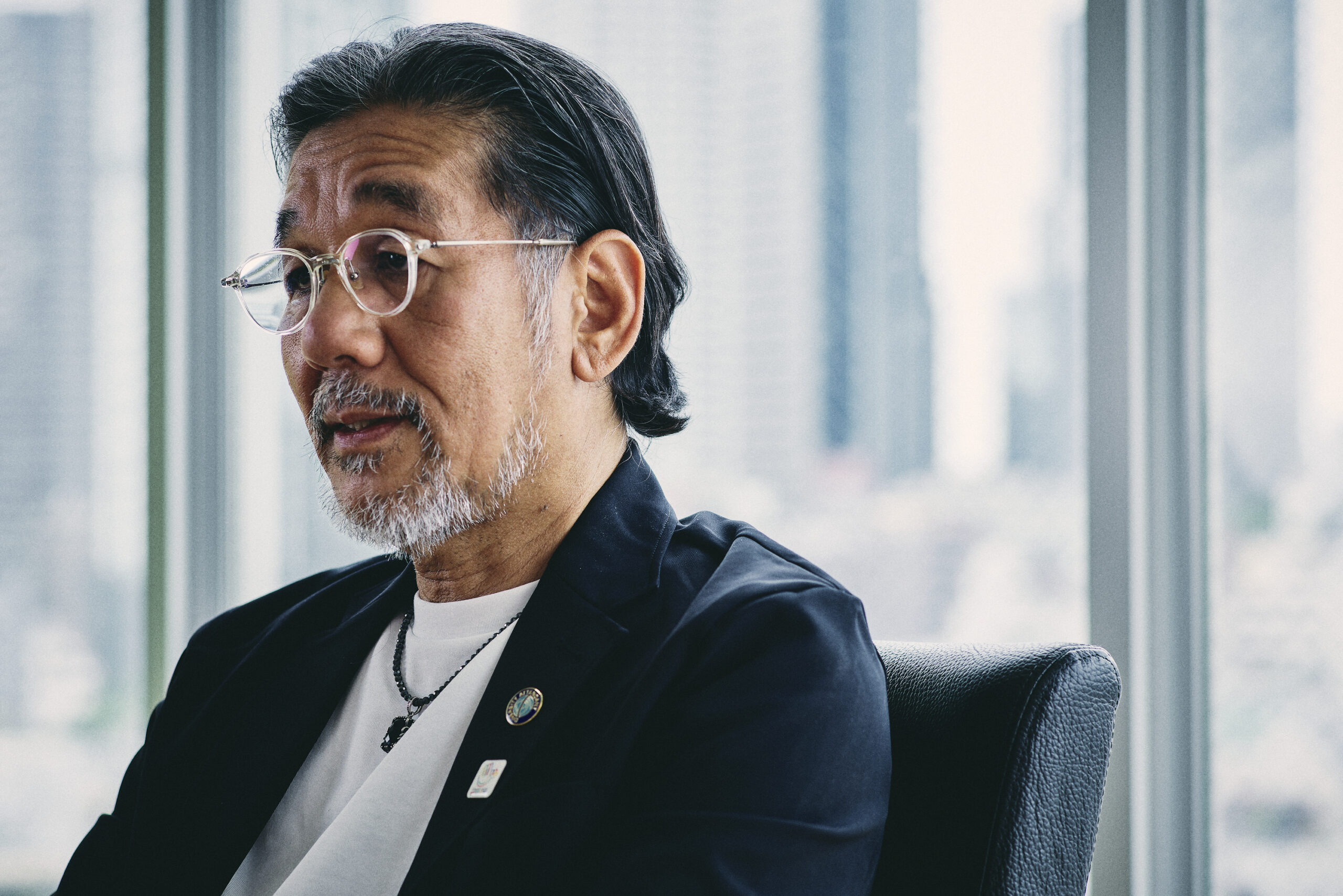
――How did systems such as proxy telephone services lead to the commercialization of these systems?
Miura This also started with my experience one day. One night around the year 2000, I received an e-mail from a deaf friend who lived far away, saying, “Miura, please help me!” When I connected the video phone and asked what his request was in sign language, he told me that his lab, a dental technician, was leaking gas and that he wanted me to call the fire department. I hurriedly called 119 and interpreted the face-to-face exchange between the fire department and him by video phone from far away Sendai. This event has led to create the proxy telephone services and remote sign language interpretation services.
Since 2002, we have been providing telephone relay services with subsidies from the Ministry of Internal Affairs and Communications (NiCT).
*From the official website of PLUSVoice,Inc.:https://plusvoice.co.jp/company/award.php
――You have also provided a lot of support to deaf people in disaster-stricken areas.
Miura The first time PLUSVoice,Inc. provided support to the disaster-stricken areas was the Tokaimura JCO Nuclear Criticality Accident that occurred in Ibaraki Prefecture in 1999. At that time, there were no subtitles on TV like there are now, so deaf people couldn’t get information about the accident and went out without knowing what was going on. That’s why we sent a fax to about 100 deaf users living in this area and asked them not to leave their homes. This was also covered in the news, but the situation was like that even 25 years ago.
In the wake of the 2004 Niigata Chuetsu Earthquake, we worked with Microsoft to set up a mailing list to provide information. In the aftermath of the Great East Japan Earthquake, the Kumamoto Earthquake, and the torrential rains that have occurred in various parts of Japan in recent years, we provided support through remote sign language interpretation and telephone relay. In particular, immediately after the Great East Japan Earthquake, we provided free proxy telephone services and remote sign language interpretation services to deaf people in the three prefectures of Iwate, Miyagi, and Fukushima. Later, when I got stuck in supporting through volunteers, the Japan Foundation took over the support project. In 2019, the telephone relay service became a public infrastructure, fulfilling a long-cherished dream.
――You have been to the disaster-stricken areas, but what is the actual situation surrounding deaf people in the disaster-stricken areas?
Miura When the Noto Peninsula earthquake struck in January last year, I went to the site the next day. Normally, it would take about 2 hours by car from Kanazawa city to Okunoto, but it took 12 hours due to the road being cut off and the road conditions being bad. In particular, the houses in the Suzu City area were badly damaged, and I was worried that they might be buried alive, so I went around to the houses of the deaf one by one to look for them. Even if you call out their names loudly around the shelter, deaf people cannot hear. In addition, the deaf person could not communicate with anyone when they found them, and they looked anxious without knowing the situation. There are still many deaf people who will be left behind. Thinking that this was not a fuss about providing remote interpretation to disaster victims, we worked with the prefectural government, the Information Center, the All Japan Federation of the Deaf, and others to create a place to gather deaf people at 1.5 evacuation centers (evacuation centers that temporarily accept people with special needs, such as the elderly), and transported them by car. However, in the end, they couldn’t go home as their house collapsed, so I supported them until they found a secondary shelter and moved there.
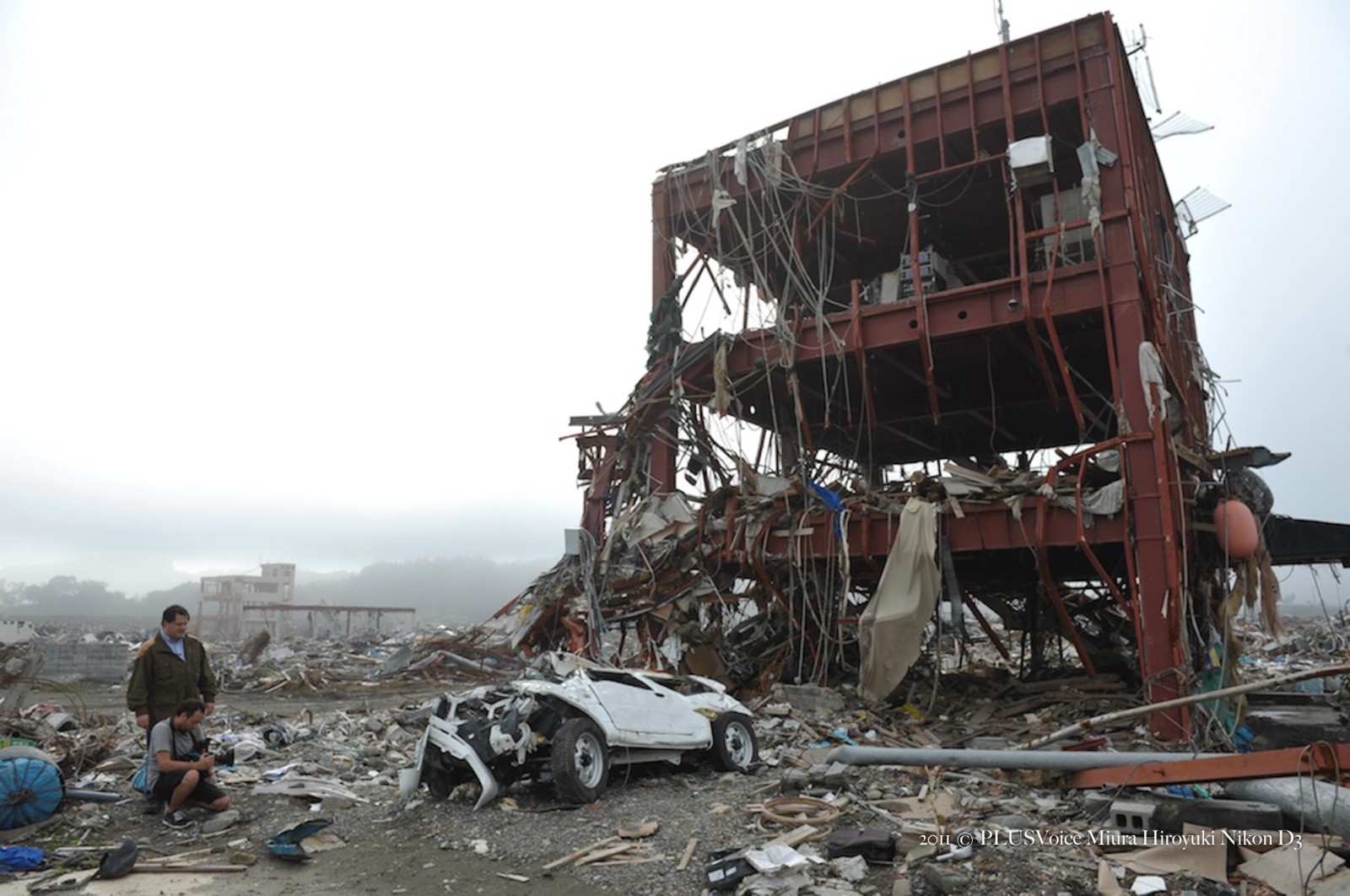
Miyagi Prefecture at the time of the Great East Japan Earthquake.
The call for condemnation is also inaudible to the deaf
We are confronted with the fact that there are still many issues to be addressed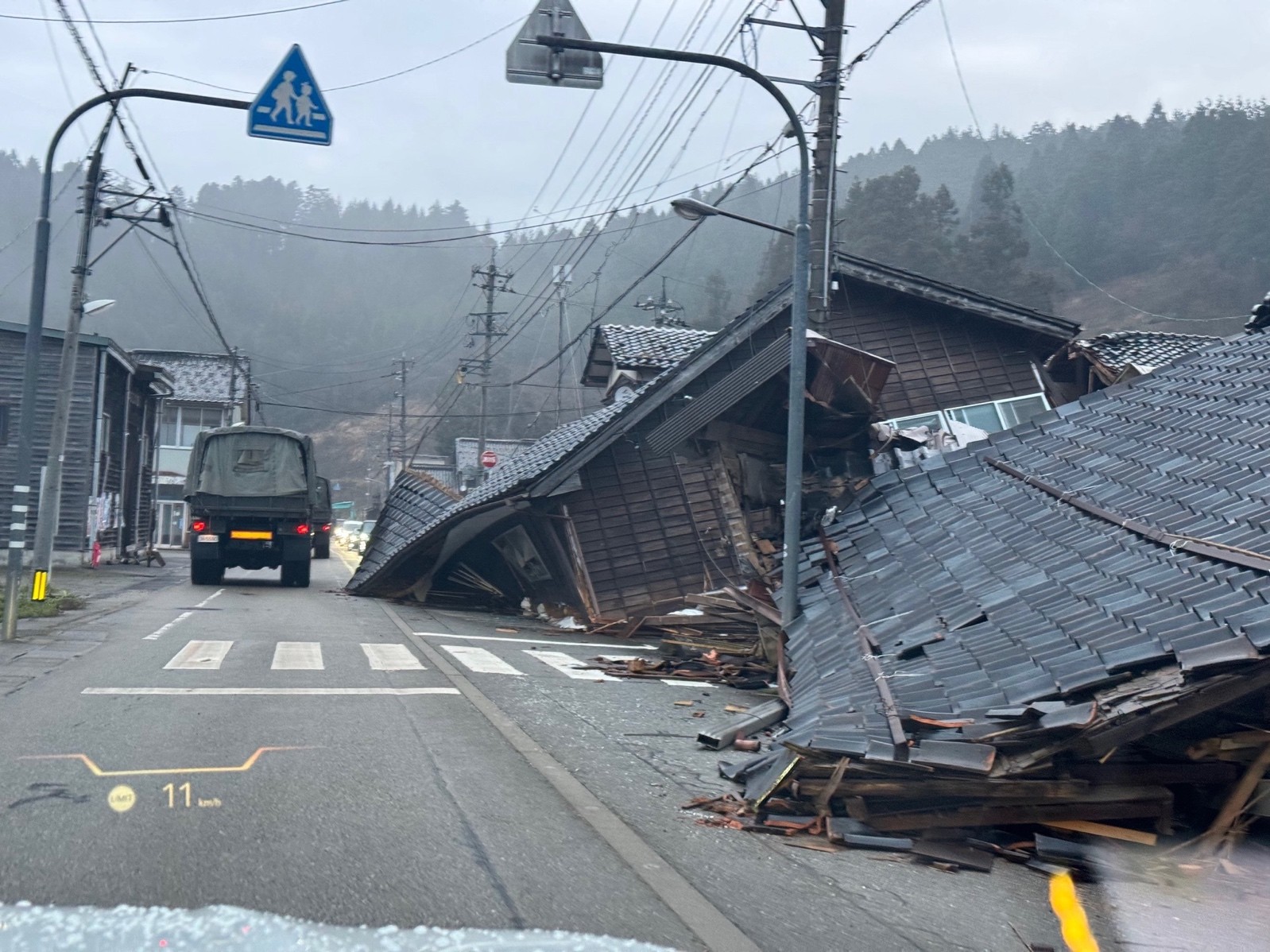
――Japan is a country prone to earthquakes. There is no guarantee that major disasters will not occur in the future, so that is an issue.
Miura I think it is necessary to make it more widely known that there are means of communication, such as proxy telephone services and remote sign language interpretation services. That way, for example, if you call the police in a traffic accident using a telephone relay service or our proxy telephone service, or if you get sick and call an ambulance, you can talk to the police or paramedics in sign language through a sign language interpreter. After all, for deaf people, there are some things that can only be communicated in sign language. If the environment in which these services are used becomes commonplace, it will be less likely that they will be left out of information and isolated due to lack of communication in the event of an earthquake or emergency that may occur in the future.
I want people to know more about the current situation that “even if you can’t hear, you can communicate anytime, anywhere.” I think that’s what we need to do now.
――What is the reason why communication methods such as proxy telephone services and remote sign language interpretation services are not yet widely used?
Miura I think a major factor is that many people are not aware of the needs of service (= communication). For example, when I go to a bank and ask a staff member, “Are you having trouble communicating with deaf people?” they say, “I don’t have any problems.” This is because they can use written communication. On the other hand, the same is true for the deaf people themselves. In short, they feel that “they only need to convey their requests without communicating deeply with the other party”, and they do not realize that they are moving away from the framework of “real communication” that exists daily. Normally, it is natural for people to talk to each other, but in a bad way, I feel that we have become accustomed to each other’s environment. Of course, I think there are many silent majorities of deaf people who say, “I’m not used to it! I have no choice but to do it”.
However, of course, there are people who notice this, and when they use the service, they say, “I was able to talk to a familiar face for the first time” and “It was fun to talk with the driver when I got in a taxi.” However, there are still many people who are not sure what it is.
Launched in 2023, Enkaku+, a service for individuals, allows users to connect to a sign language interpreter operator from PLUSVoice,Inc. immediately from their smartphones. In addition to emergency response in the event of trouble, it also handles a wide range of situations, such as a small chat with a hearing person or ordering at a restaurant. There may be a stereotype among deaf people that they can only use sign language interpretation services when they are really in trouble, but that is not the case. I hope that more people will become more aware of the importance of communication, and that the world will change to a world where these services are used daily nd casually.
Even if you can’t speak a foreign language, you can communicate in each other’s language using the functions of your smartphone. Despite this, communication with deaf people is often done in written communication. This is not verbal communication. “Japanese” and “Sign Language”. There’s always a way to communicate quickly.
There is also a service that allows individuals to use remote sign language interpretation more lightly.
For “language-to-language” conversation can become the basis
――If that happens, the range of activities of sign language interpreters will expand even more.
Miura Yes, the average age of sign language interpreters is about 60 years old, and the number of interpreters themselves, especially in rural areas, is small, and there are almost no young registered interpreter dispatchers. In the event of a major disaster, it is not easy to dispatch an elderly interpreter to the scene. However, with remote interpretation, sign language interpretation can be performed through a monitor, regardless of whether it is in a heavy snowfall area or on a remote island, or where the interpreter is or the age of the interpreter. That’s the way it is. It would be a waste if we didn’t create an environment where people with skills can make the most of them. In addition, with remote interpretation, it is possible to prepare highly specialized interpreters according to the situation, such as medical, legal, or car. However, in rural areas, there is a reluctance to bring new life such as remote interpretation, especially out of consideration for local interpreters. As a good example, in Tottori Prefecture, local interpreters play a role during the day, and we provide remote interpretation after hours and on holidays. What we really need to think about is solving the problems of deaf people and improving their lives.
―There are still many issues to be addressed.
Miura After all, there is a sense that “the nail that sticks out gets hammered down,” and even though we are doing it with a clear intention, there are not a few people who accuse us of “that’s just a performance” or “that PLUSVoice….” That’s why I always brace myself when I go to support disaster-stricken areas, but recently I’ve gotten used to it (bitter laughs). But we’re just doing what we take for granted, and those who will understand will understand, and there are more people who understand. That’s why I am able to keep going without being discouraged. That’s why we have been able to come this far together with our employees. I’m really happy that there are many companies and governments that understand our thoughts and are proud to introduce our services.
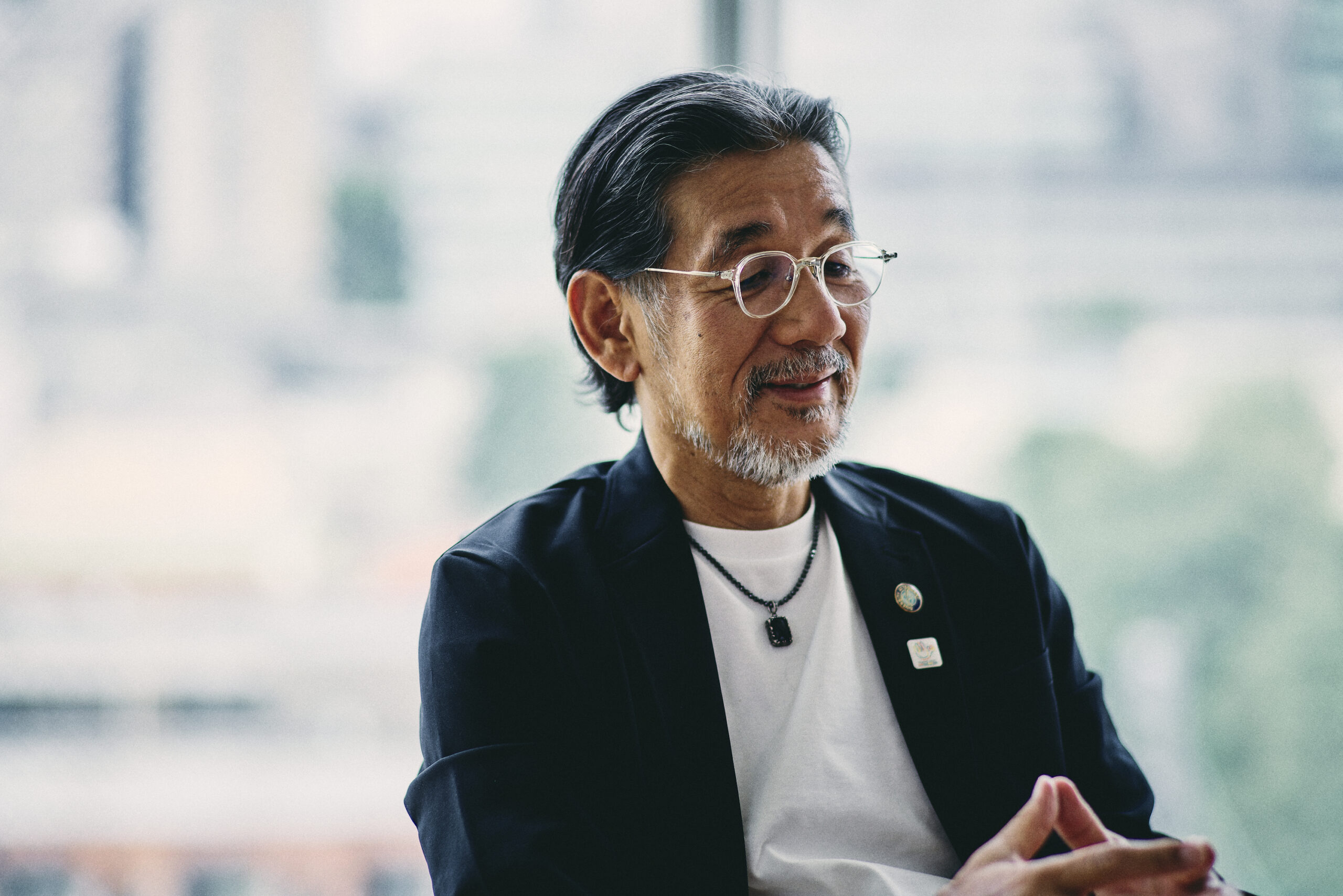
――You are also a freelance photographer, and I heard that you are also promoting human resources such as deaf photographers.
Miura That’s right. I train deaf photographers and designers, and we are engaged in photography and web content production. In 2005, we established the Media Division in our Sendai office as a job support project for the hearing impaired. I mainly have contracts with high school baseball federations in Miyagi, Fukushima, Yamagata, and Aomori prefectures, and have deaf photographers who take pictures of high school baseball. At first, they didn’t understand the technique or the logic of the shooting, but when I left the flash and let them shoot, they started to study more and more with a desire to improve, and now they take very good photos. Deaf people have high visual abilities because they cannot hear. It’s a big advantage when it comes to taking pictures, isn’t it? I’ve been a photographer for a long time, and I’m still shooting for motorcycle magazines, so when I’m asked what my occupation is, I actually often answer, “I’m a photographer” (laughs).
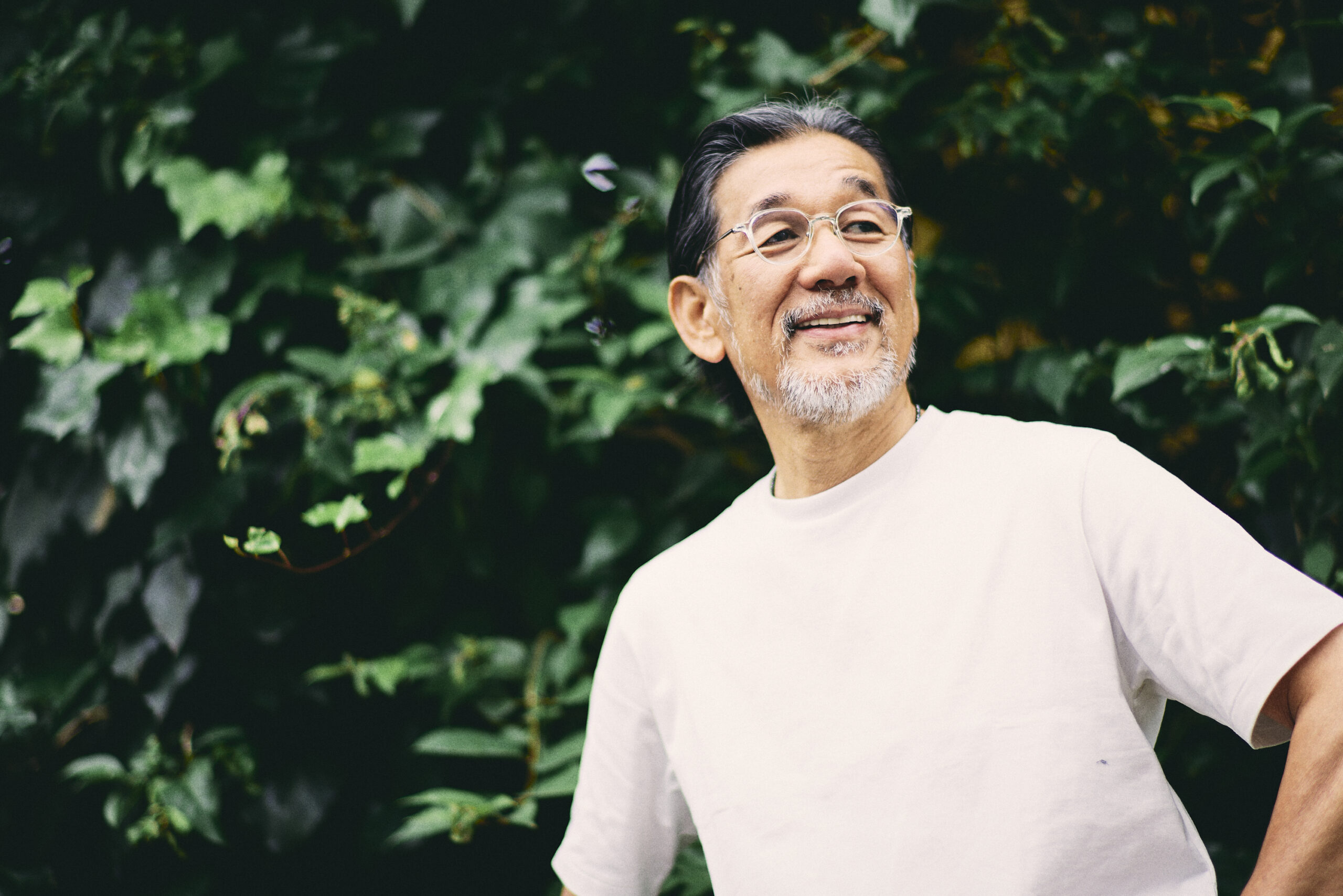
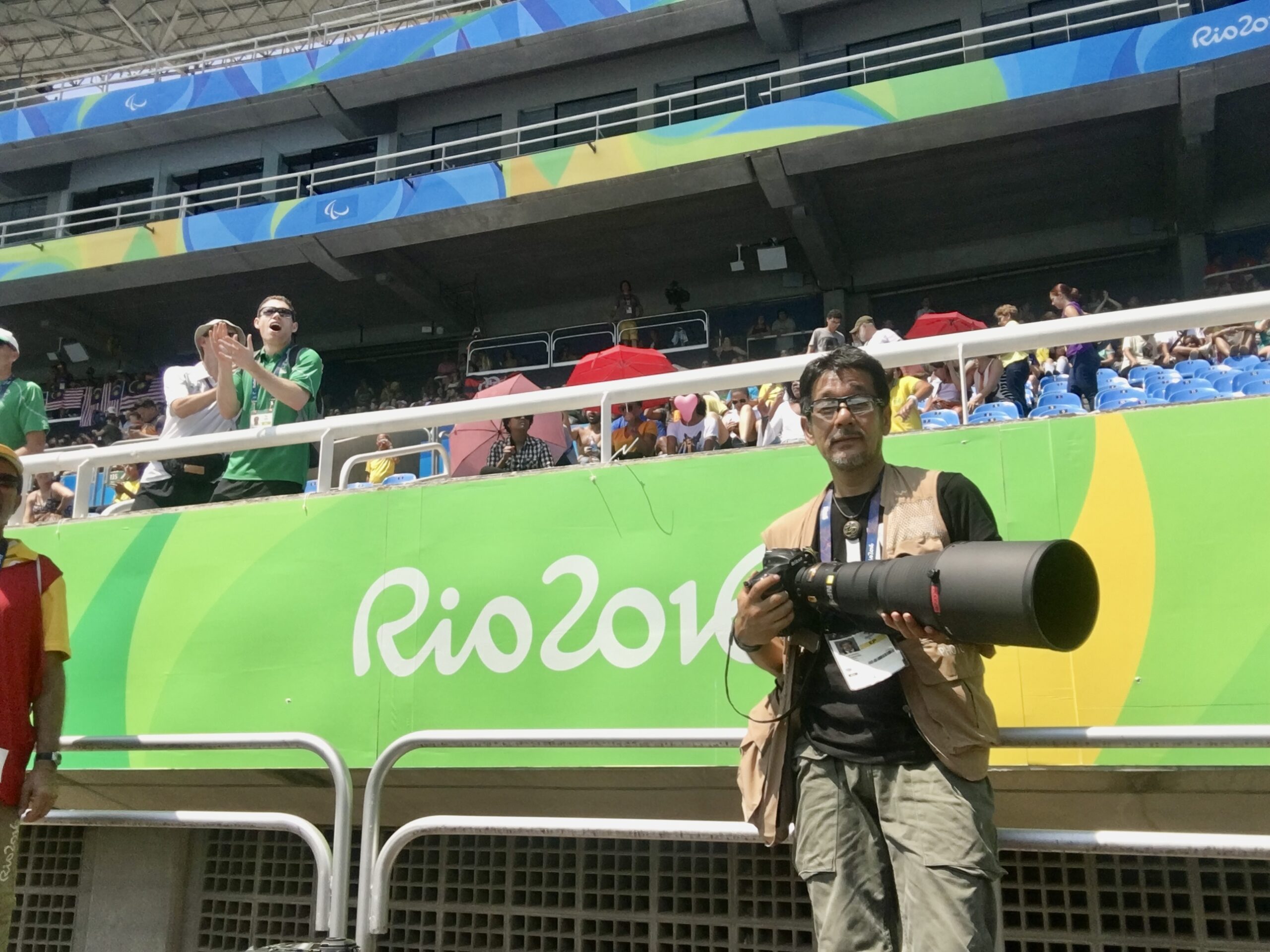
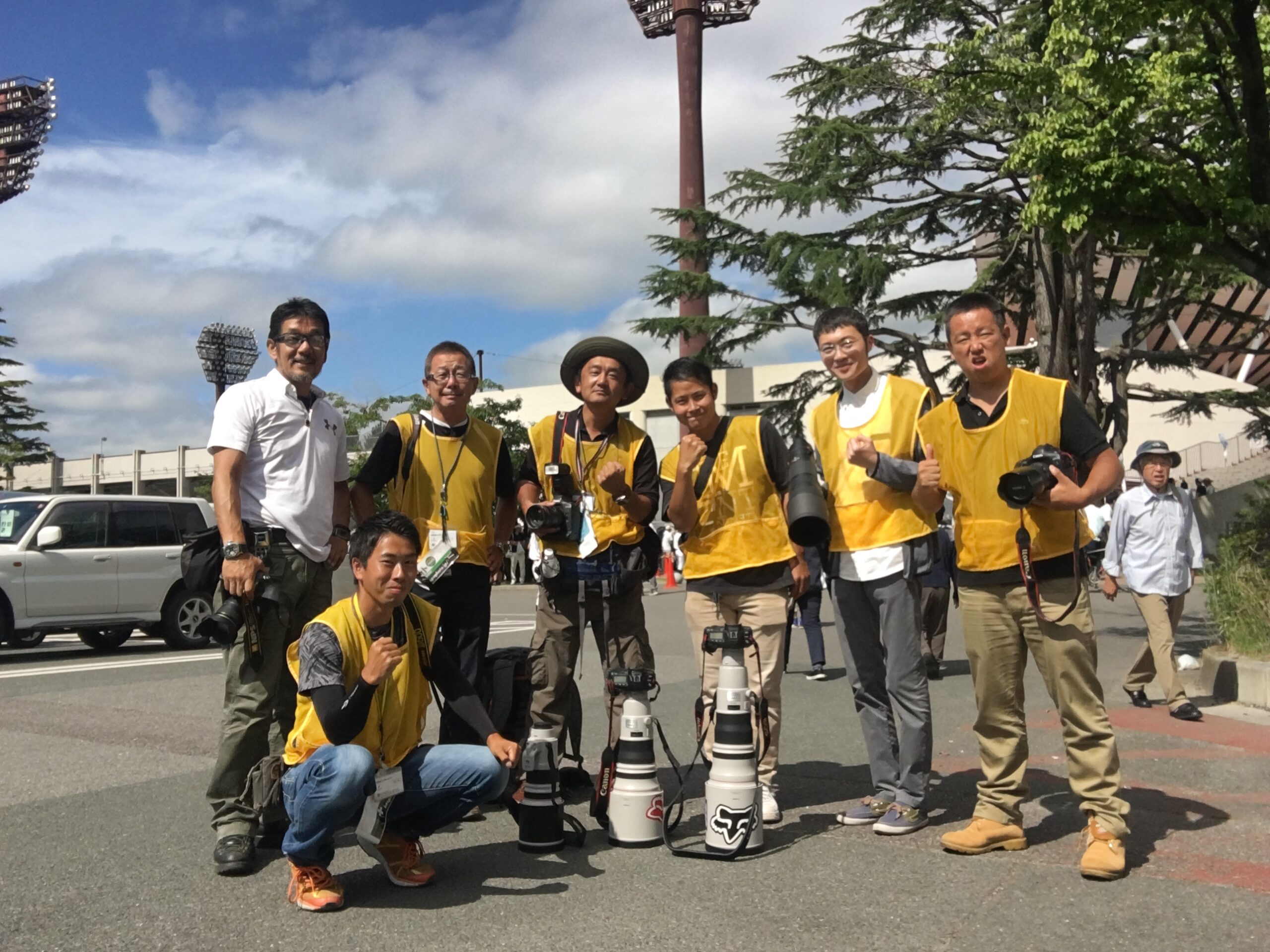
――Are you also self-taught in photography?
Miura Yes, I’m self-taught. There was a bit of a connection with photography. I was a baseball player all the way through high school, and I wanted to be a professional baseball player. When I was in my first year of high school, my father came to take a picture of me playing baseball with a single-lens reflex camera. My father was much older than the father of my seniors. Moreover, because he had a chronic illness, he always walked with his back hunched, and he looked like a weak grandfather. It was a very emotional time, and I was somewhat embarrassed. Due to my seniors, I told my father, “Don’t come!” I think I probably said it badly. So my father didn’t come to take pictures of me for three years. My father passed away on New Year’s Day of the year I took the university entrance exam, and when I sorted through his belongings, I found many photos of me playing baseball from behind a tree. My father came to take pictures… In the end, I stopped playing baseball after I quit during high school due to an injury, but after that, I was unexpectedly approached by the high school baseball federation and got a job taking pictures of it. It’s a strange thing, isn’t it? I feel like I’m being guided by my father.
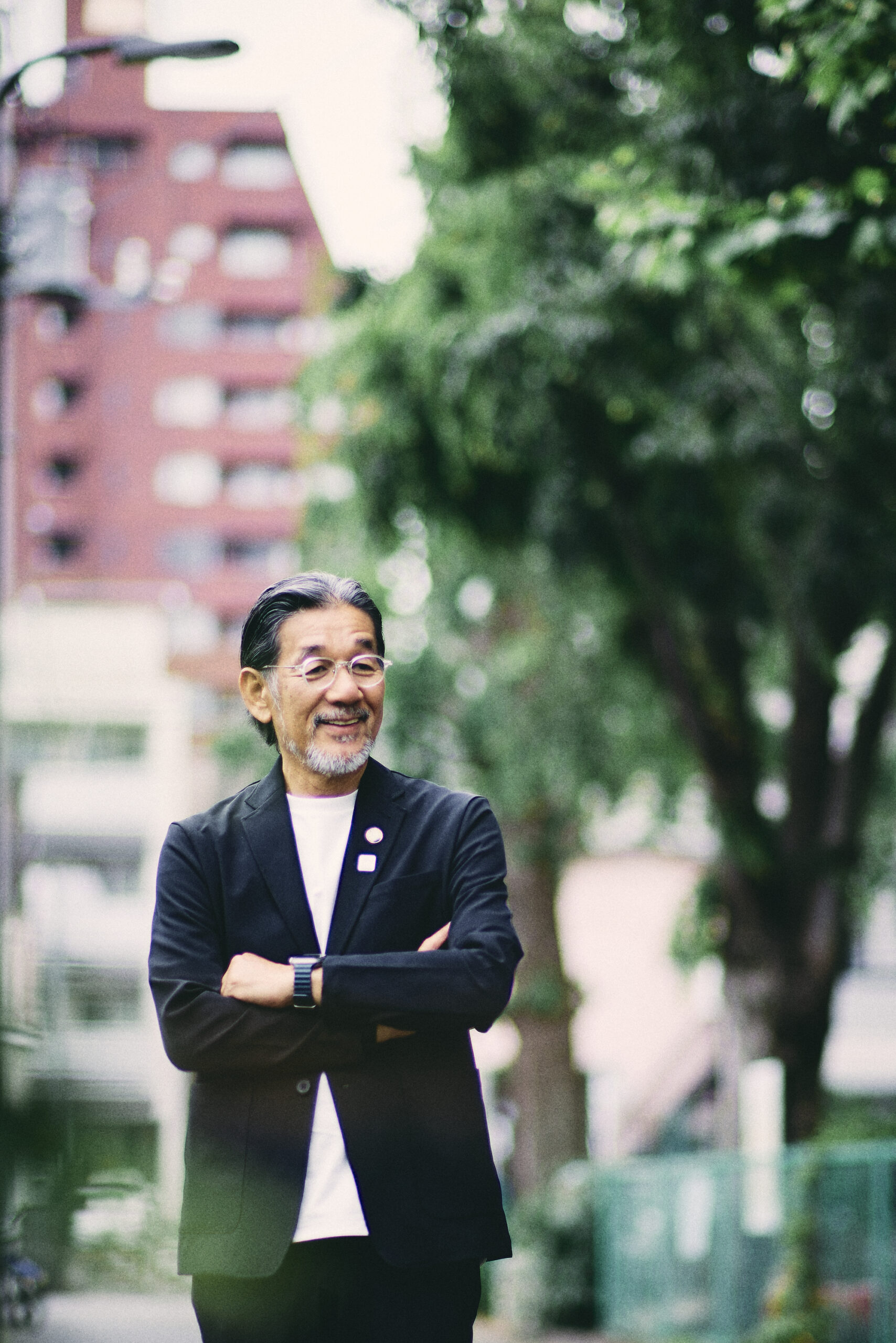
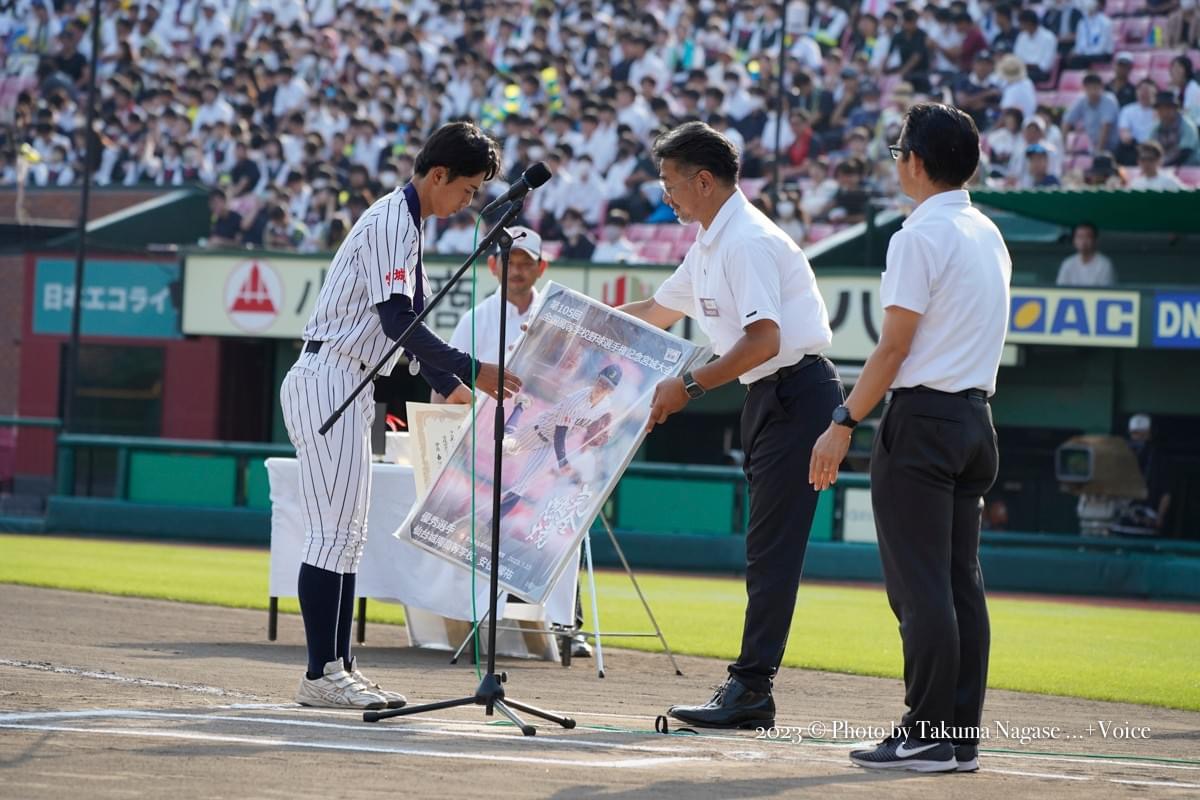
――It feels like something fateful. The fact that you have taken pictures in a motorcycle magazine means that you also like motorcycles?
Miura I started riding motorcycles after I couldn’t play baseball, and motorcycles have become an important way of communicating with my deaf friends. Just like photography, it’s my life’s work. A famous touring event called “Sunrise Sunset Touring Rally” is held every year, and I enter and participate in it with my fellow deaf riders. It starts at sunrise on the Pacific coast and finishes at Senrihama (Ishikawa Prefecture) on the Sea of Japan side by sunset and is held from the end of May to the beginning of June every year. This year, we participated with 41 bikes.
I’m also currently running an activity called LIM, which stands for “LIFE IS MIRACLE” and I wear T-shirts and hoodies with the LIM logo on and run with my fellow deaf riders. These items are based on the episode “Miracle Harley”. A Harley swept away from the town of Yamamoto in Miyagi Prefecture in the tsunami caused by the Great East Japan Earthquake was found on the coast of Canada one year later. The owner of the motorcycle was an employee of Yamamoto Town, who set up a disaster FM broadcast at the time of the earthquake. We transcribed the radio broadcasts and provided information to the deaf. When I found out, I felt something fateful again. LIM is an apparel brand launched by an employee after his retirement. We are conducting charity activities through LIM hoping to convey the disaster without forgetting it. The Harley that was swept away is on display at the Harley Museum in Milwaukee, and the photo I took is on display at a roadside station in Yamamoto Town.

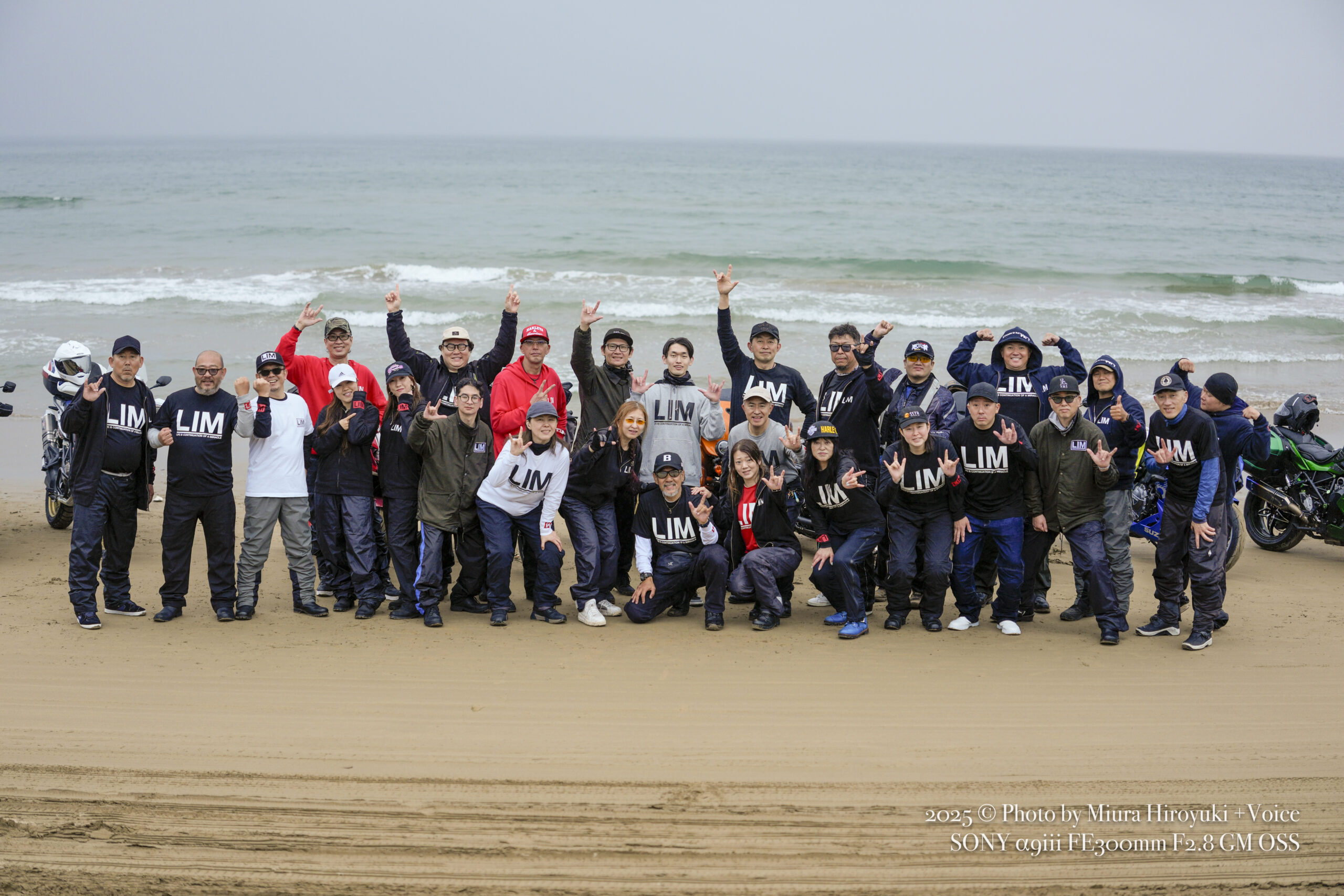
With Deaf Rider Friends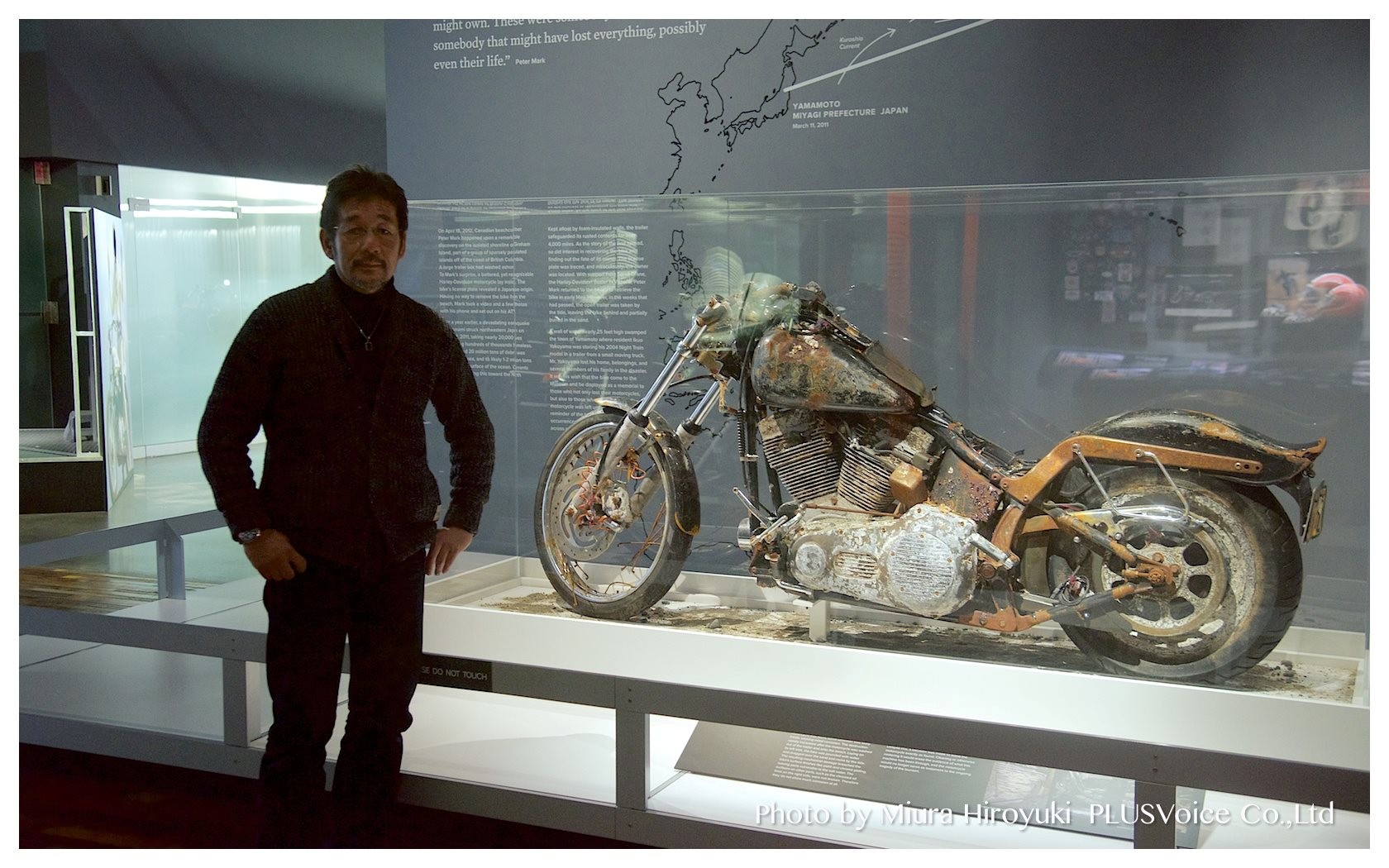
Various causes and effects are connected
――You have a deep connection with deaf people in your private life.
Miura For some reason, I have a lot of deaf friends. I don’t want to lump them all together, but many of them are very straightforward in their expressions and clearly convey their thoughts regardless of how close they are. They don’t use the so-called read between the lines, and I feel comfortable exchanging words in a straightforward manner. Maybe that’s why I think there are so many people who understand me.
It may seem like I’m helping them when I’m in the PLUSVoice,Inc. business, but I’m not. I get help from them daily , so I give them back. That’s all.
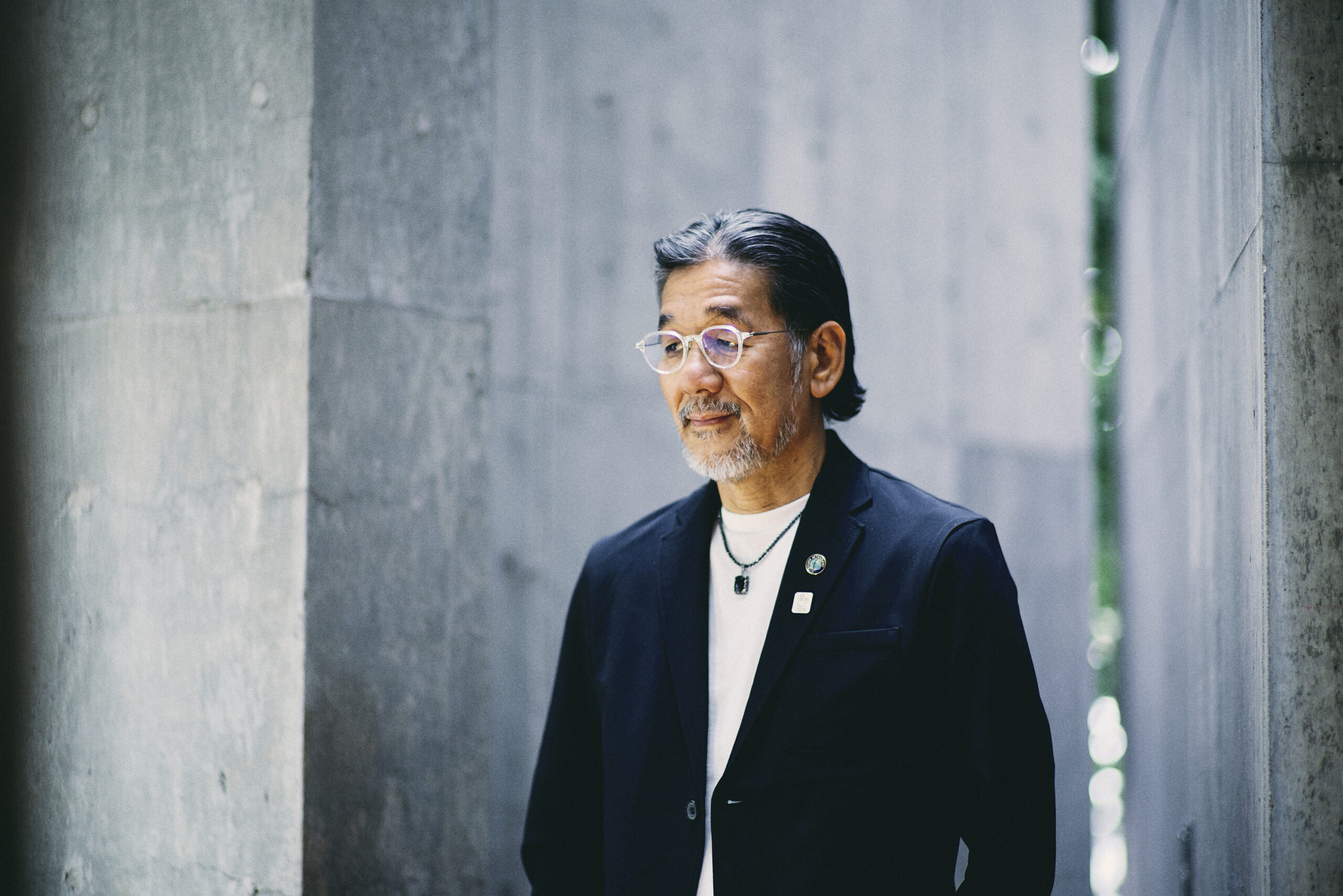
――Please tell us about your thoughts on the Deaflympics. How did you feel when you found out that it would be held in Tokyo?
Miura It is often said that it is a business opportunity, but I was more than happy that the Deaflympics were being held in my hometown. As was the case at the Tokyo 2020 Olympic and Paralympic Games, I am able to witness such precious moments in my lifetime. After all, the Deaflympics are celebrating the 100th anniversary. I almost made a triumphant pose.
――Which sports and athletes are you looking forward to at this tournament?
Miura If I had to pick one, it would be the men’s 100m in track and field. In February of this year, as part of the “Connecting the World with Starting Lamps” project, we donated starting lamps to the Dominican Republic for use in deaf track and field together with Takuma Sasaki and others. When we hear Dominican Republic, we think of Christopher Melenciano. Sasaki lost to him at the World Deaf Athletics Championships in Taiwan last year, so I think he is burning with revenge. I’m very excited to see “who will win the gold medal”.
――What do you want people to know about the Deaflympics and what do you expect from the tournament?
Miura Many people from overseas, including the athletes, visit the stadium, so you may see foreigners using sign language on the train. I would like many people to see such a scene and know that sign language is one language. However, I don’t think it should be just Tokyo where everyone is getting excited. I hope that the Deaflympics will be an opportunity for even deaf people in rural areas to let everyone actively learn about their language. Above all, there are still many people who do not know the word “deaf”. I think it’s very important for deaf people and people involved in the Deaflympics to get involved in some way and make it known. Nowadays, there are various sources of information, including SNS, so it would be wonderful if we could influence the whole Japan with the help of those sources.
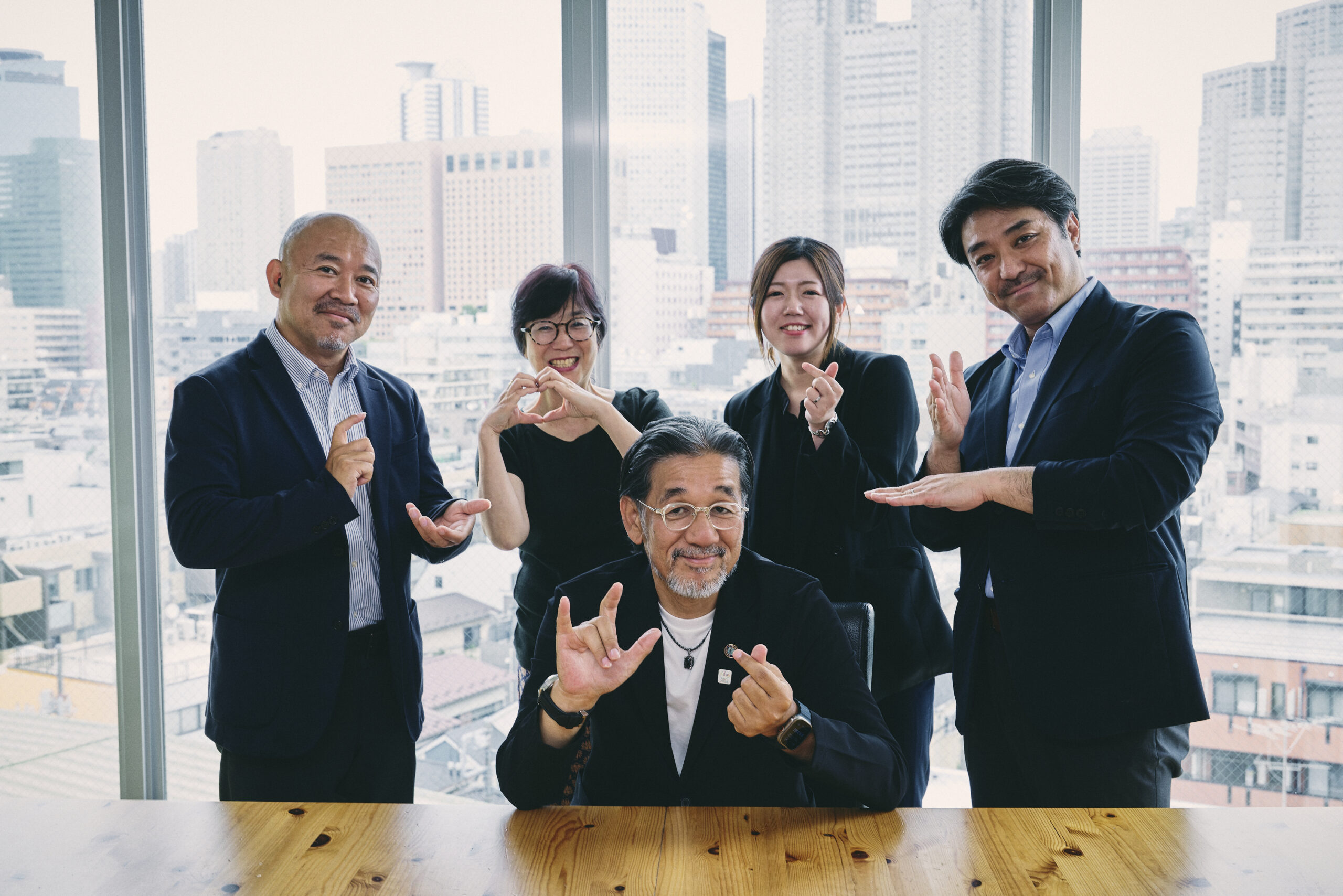
――Thank you very much. Lastly, please tell us about your future prospects as a company.
Miura Interpreting, photography, system development, consulting, each and every one of us is proud to work as a professional. All the staff has been doing a really good job since the company was launched, but there is still a part of the company’s hard work that has not been able to see from the outside. We currently have about 60 employees, and I believe that my role is to create a better environment for them and the deaf people who support us. We have valued the management philosophy of “Sanpo Yoshi” of top-tier merchants known as Omi Shonin, which improves not only sellers and buyers, but also society as a whole. I would like to keep that mindset in mind.

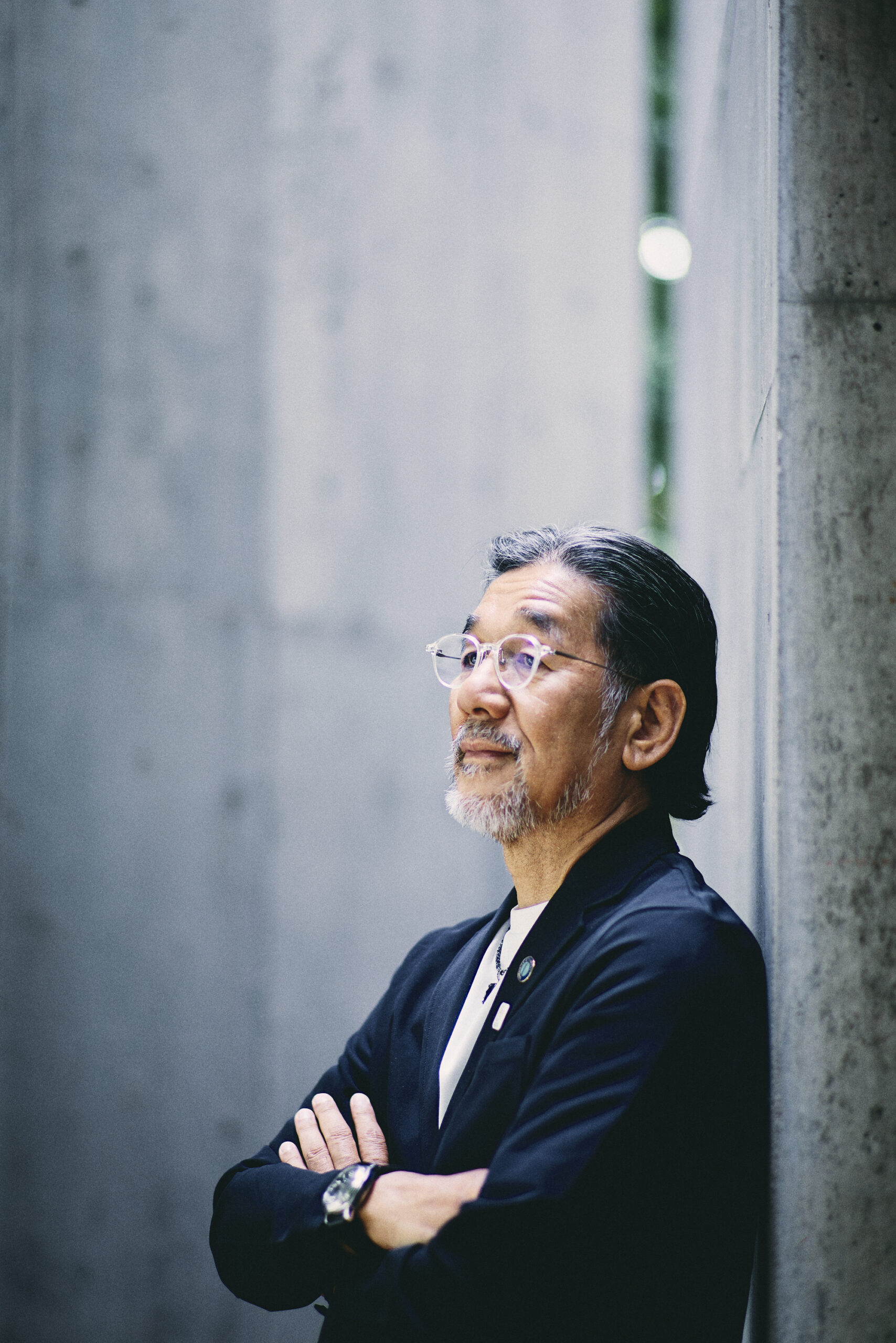
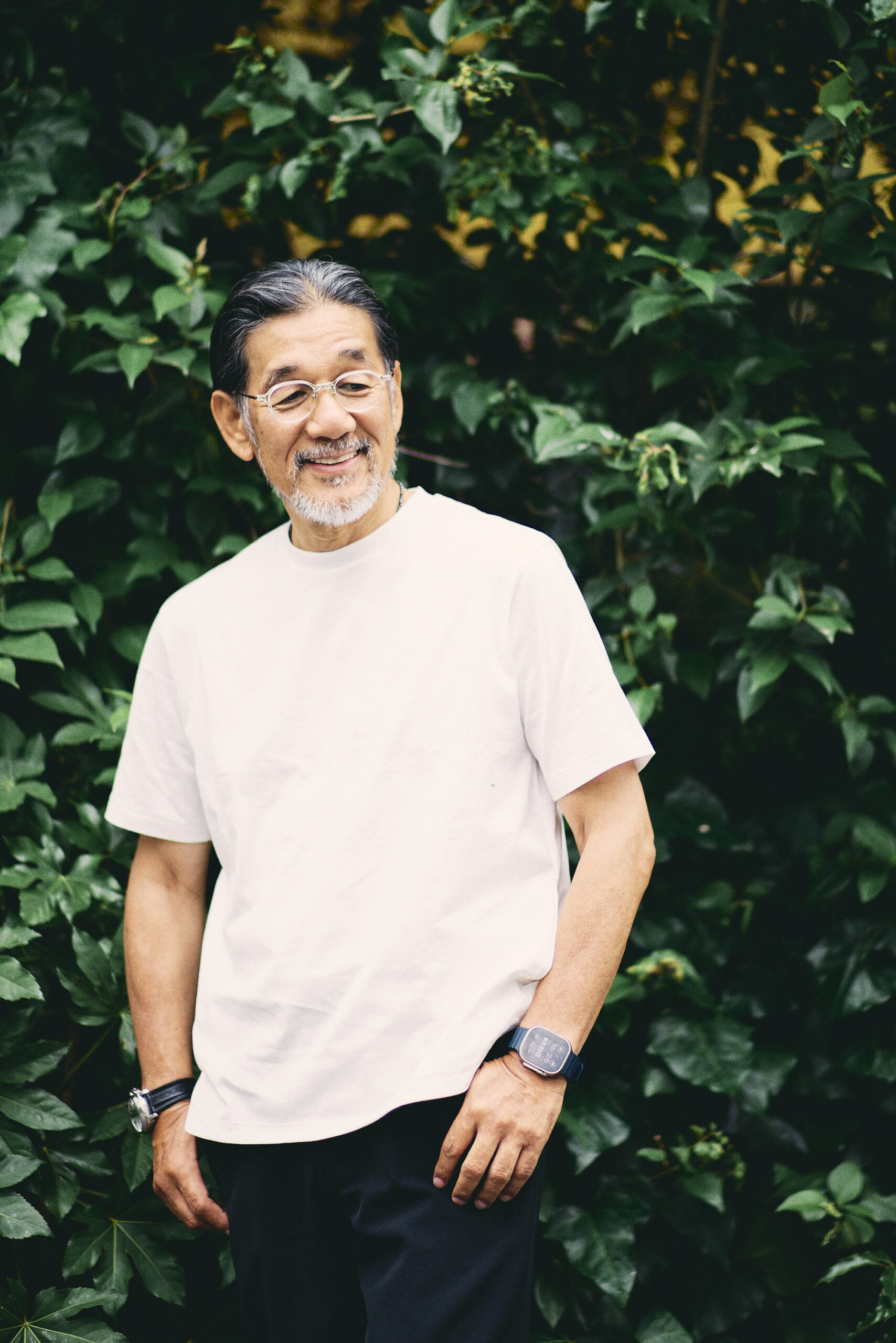
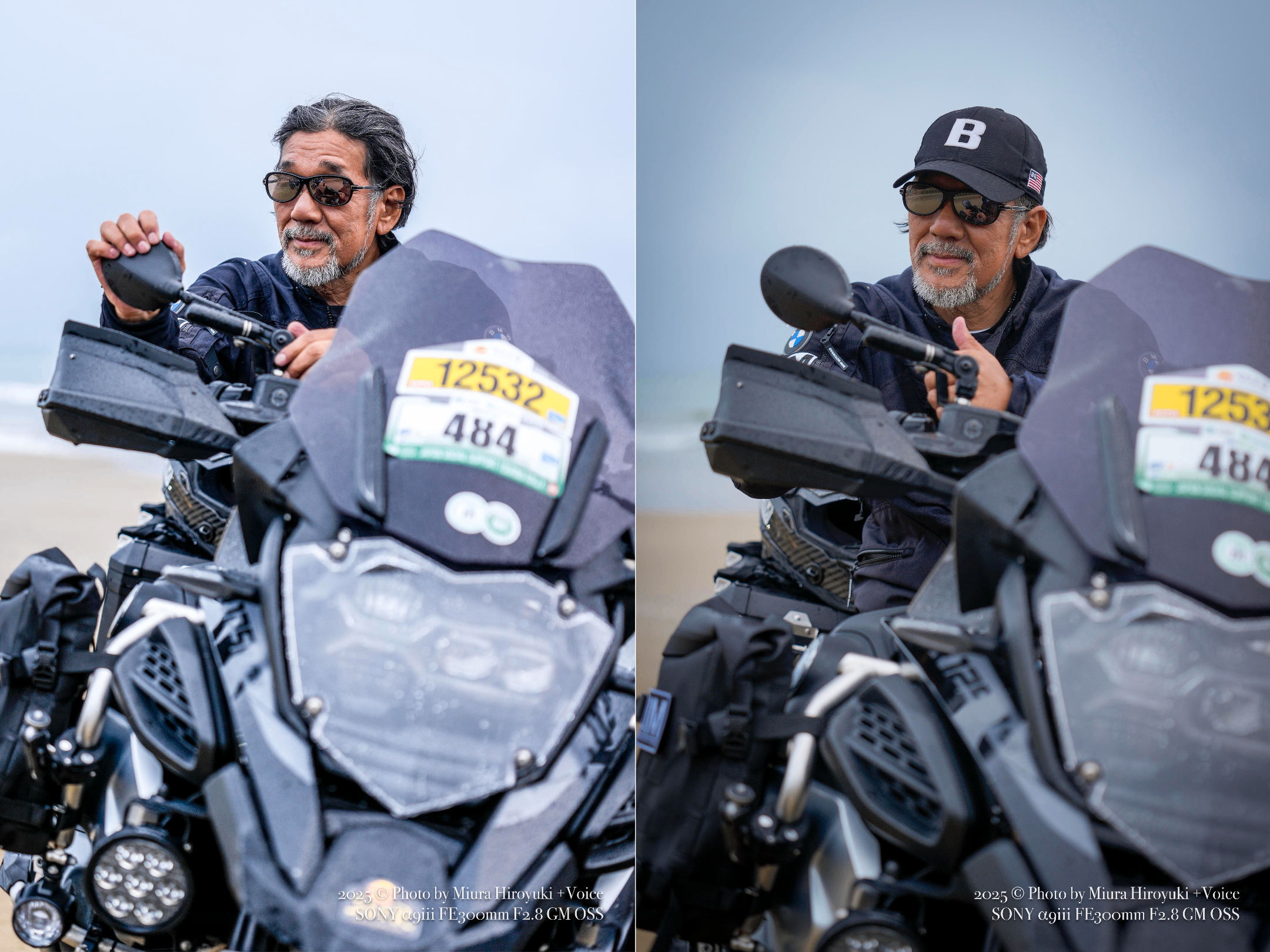
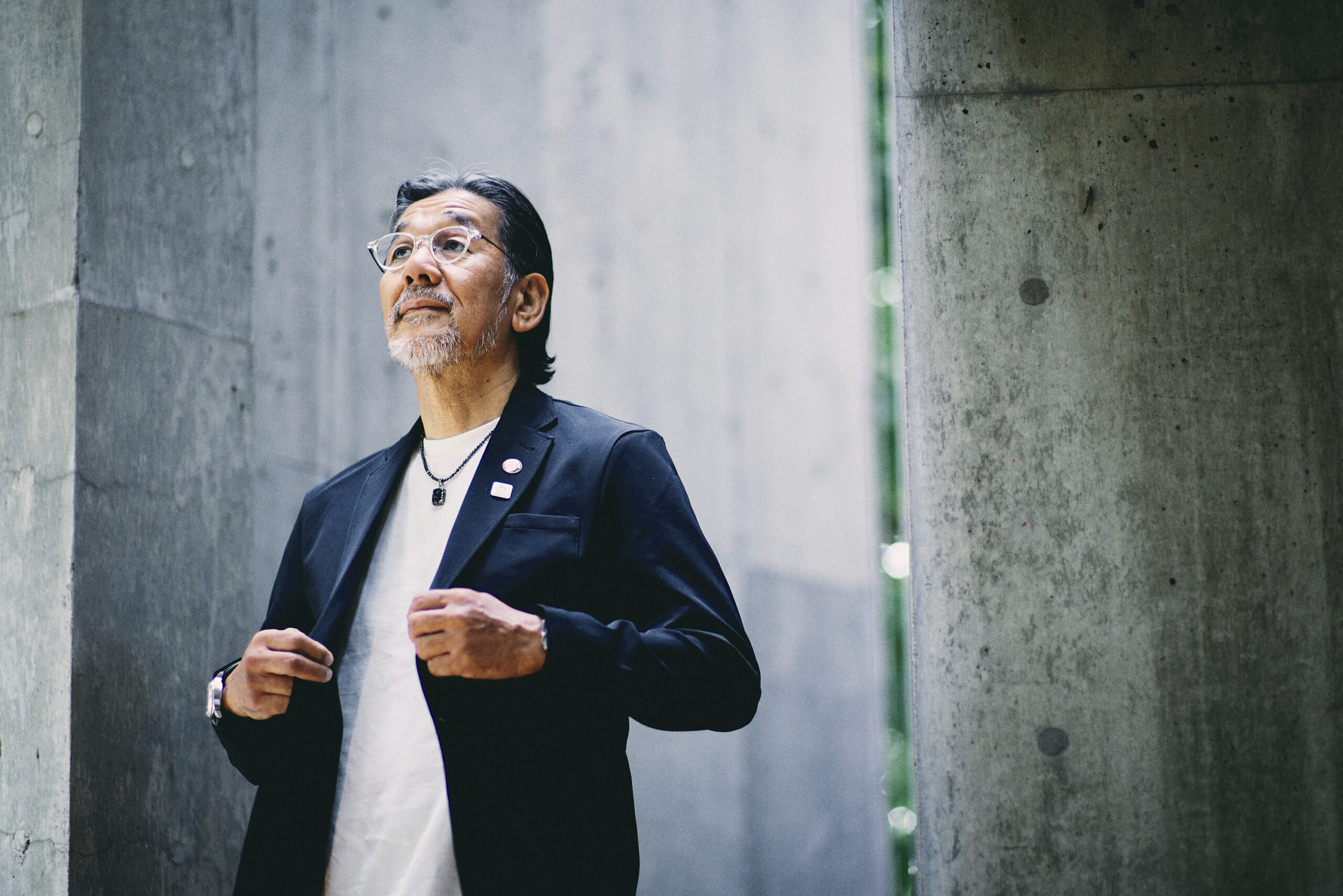
Hiroyuki Miura / Born in Miyagi Prefecture in 1963
President and Representative Director of PLUSVoice,Inc.
With the aim of eliminating the communication barriers faced by people with deaf hearing loss, in 1998 he established PLUSVoice,Inc. in Sendai City, Miyagi Prefecture. Since then, he has been focusing on the development of communication services that utilize ICT, such as “proxy telephone service” and “remote sign language interpretation service”. So far, we have been to numerous disaster-stricken areas such as the JCO Nuclear Criticality Accident in Tokai Village, Ibaraki Prefecture, the Great East Japan Earthquake, and the Noto Peninsula Earthquake, and has worked to support the provision of information to deaf people and to spread communication infrastructure. In addition, as a professional photographer, he focused on employment support, and by training deaf photographers and creators, he created a place for people with hearing loss to play an active role. In addition to the Sendai office, which is currently the headquarters, the company also has offices in Tokyo, Osaka, and Saitama. The Tokyo 2025 Deaflympics will be used as an opportunity to promote understanding and awareness of communication through sign language.
《PLUSVoice,Inc.》
Web:https://plusvoice.co.jp/
X:@plusvoice_tw
IG:plusvoice_1998
YT:@plusvoice.1998
text by Hiromi Hiraki
photographs by Uta Mukuo
2025.10.09

目次Until I accept my “Deaf self”A new scenery opened up by challengesBehind the 1 million You Tube […]
2025.10.09
目次Until I accept my “Deaf self”A new scenery opened up by challengesBehind the 1 million You Tube […]
2025.08.06

目次I was told that “I didn’t want to be born into a house like this”Hokkaido→ Yokohama→ Nagoya→ Yokohama […]
2025.08.06
目次I was told that “I didn’t want to be born into a house like this”Hokkaido→ Yokohama→ Nagoya→ Yokohama […]